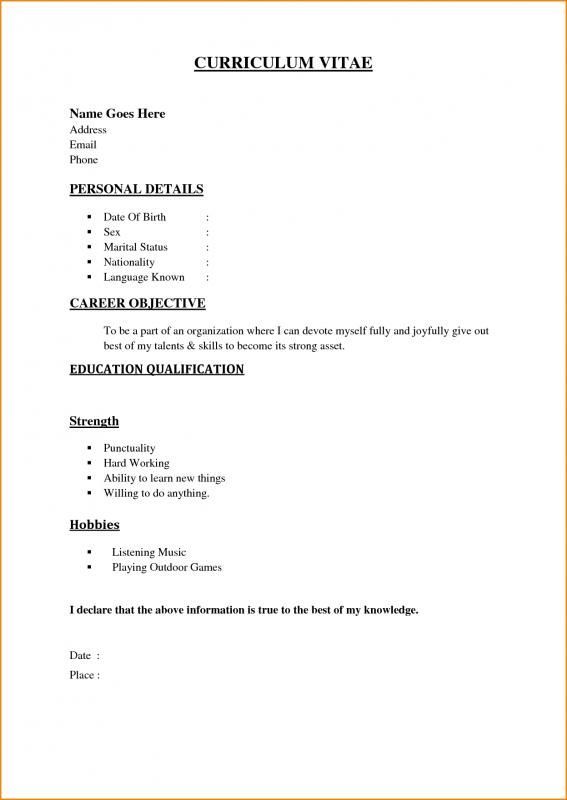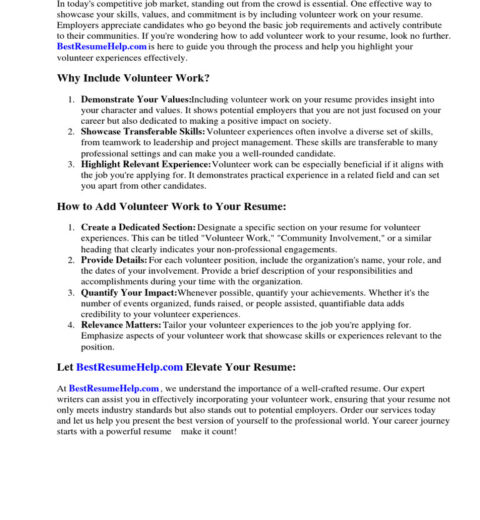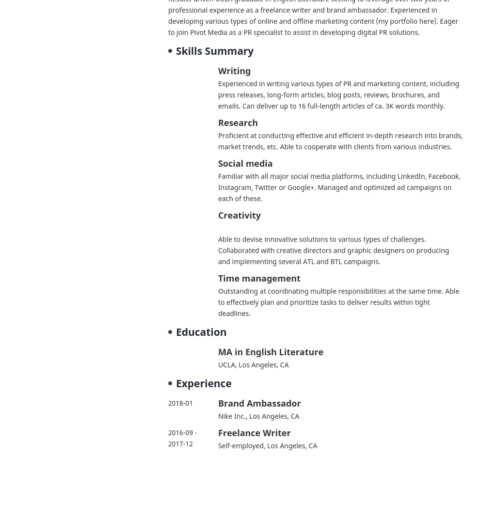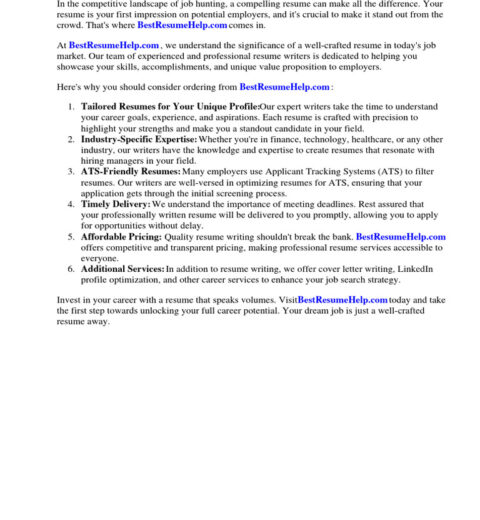In today’s hyper-competitive job market, crafting a resume that stands out is paramount. With hiring managers sifting through piles of applications, it becomes essential to create a document that not only highlights qualifications but also captivates the reader’s attention. As prospective employers often spend mere seconds scanning a resume, the importance of impactful content cannot be overstated. This article explores crucial elements to incorporate into a resume to ensure it makes a memorable impression.
1. Tailored Objective Statement
The first component of your resume should be a finely tuned objective statement. This statement serves as a succinct introduction, allowing you to clearly articulate your professional goals and intentions regarding the position. Rather than using a generic statement, customize this section for each application. Highlight the key elements of your experience and ambitions that directly relate to the job in question. This shows employers that you’ve invested time in understanding their organization and how you can contribute.
2. Relevant Work Experience
A comprehensive work history is vital, but relevancy is equally important. When listing your employment experiences, focus on positions that align most closely with the role for which you are applying. Use compelling action verbs and detail your achievements and responsibilities with quantifiable data where possible. For example, instead of stating “Responsible for managing a team,” consider phrasing it as “Led a team of five to successfully increase productivity by 20% over six months.” This kind of specificity engages the reader more effectively and can significantly enhance your appeal.
3. Showcase Your Skills
Including a well-defined skills section allows applicants to feature their proficiencies prominently. This section should encompass both hard skills, such as software knowledge and technical abilities, and soft skills, including communication and teamwork capabilities. However, instead of merely listing these skills, provide context. For instance, you might mention “Proficient in Adobe Creative Suite, having utilized it to design marketing materials that drove a 30% increase in customer engagement.” This approach provides tangible evidence of your competencies and their impact.
4. Education and Certifications
Education remains a key factor for many employers, particularly in industries where advanced degrees or specific certifications are a prerequisite for employment. When detailing your educational background, include the institution name, degree attained, and graduation date. Additionally, emphasize any honors or relevant coursework. If you possess certifications pertinent to your field, be sure to feature them prominently in this section. This communicates your dedication to professional growth and continuing education, qualities highly valued by employers.
5. Volunteer Work and Extracurricular Activities
Including volunteer experience and involvement in extracurricular activities can provide valuable insight into your character and values. Such experiences often highlight leadership, teamwork, and a strong work ethic—attributes that employers prize. For example, participation in a community service initiative can demonstrate your commitment to social responsibility, while a role in a professional association may underline your enthusiasm for industry engagement. Clearly articulate the skills and insights gained through these activities, as they can differentiate you from other candidates.
6. Professional Development
In today’s rapidly evolving professional landscape, ongoing development is crucial. Be sure to include any workshops, seminars, or training programs you have completed that are relevant to the job you are applying for. This shows prospective employers that you are proactive about staying abreast of industry trends and enhancing your capabilities, making you a more attractive candidate. Consider summarizing key takeaways from these experiences, thereby giving insights into your commitment to lifelong learning.
7. Strong Formatting and Visual Appeal
Even the most compelling content can be overshadowed by poor layout. A well-structured resume boasts clear headings, consistent formatting, and a professional appearance. Use adequate white space to prevent clutter and consider using bullet points to enhance readability. While sticking to traditional fonts is often advisable—such as Arial or Times New Roman—pursuing a modern design can set you apart visually. Just ensure that any design elements align with the professional culture of the industry in which you are seeking employment.
8. Tailored Keywords
Creating an ATS (Applicant Tracking System) friendly resume is increasingly crucial. Many companies use ATS software to scan resumes for specific keywords that align with job descriptions. Review the job posting closely to identify essential terms and phrases relevant to the role, and incorporate these into your resume in a natural manner. This not only increases your chances of passing the initial screening but also illustrates your alignment with the job’s requirements.
9. Spotlight Unique Attributes
It is essential to delineate what makes you unique. This could include speaking multiple languages, possessing special licenses, or having exceptional soft skills that enhance team dynamics. While these attributes may seem peripheral, they can resonate deeply with hiring managers looking for candidates who bring diverse perspectives and capabilities to the table. Consider integrating a unique personal statement or a brief “hobbies” section at the end of the resume that reflects your individuality and passions.
10. Error-Free Quality Assurance
Finally, perhaps one of the simplest yet most impactful steps you can take is to ensure your resume is free from errors. Typos and grammatical mistakes can convey a lack of attention to detail, which could potentially disqualify you from consideration. Proofread thoroughly, utilize online tools for grammar checks, and if possible, enlist a trusted friend or mentor to review your resume. A polished final product will undoubtedly elevate your professionalism.
In conclusion, creating a stellar resume requires a careful balance of customization, clarity, and professionalism. By focusing on relevant experiences, utilizing impactful language, and emphasizing your unique capabilities, you can craft a resume designed to capture attention and land interviews. Remember, your resume is often your first touchpoint with potential employers—ensure it conveys the best version of your professional self.




